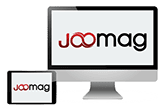What exactly is digital publishing? Simply
put, it's the production and distribution of traditionally printed materials
like books, magazines, newspapers, and catalogs in an electronic form. These
electronic documents commonly, referred to as e-books, can be produced
in many formats, such as an ePub, PDF,
HTML or an e-book application. Blogs, and even websites, are considered a form
of digital publishing.
For the purpose of this course, lets discussing
the formats ePub, PDF and e-book application. To get a better idea of what
digital publishing truly is, let's take a look at its evolution up to now.
Project Gutenberg is usually everyone's
first foray into the world of e-books. It was founded by Michael Hart in 1971
when he digitized the Declaration of Independence, creating the first digital
publication. Since its formation, similar e-book libraries have been
established, but Project Gutenberg will forever be known as the original
digital publishing library.
In the early 1990s, the home computer
became more of a reality for millions of people. The CD-ROM drive was
commonplace on many of these computers. In an effort to reach this audience and
cut production costs, encyclopedias, and even some magazine publishers began
producing their titles on CD. Additionally, some textbooks came with
live-action presentations and other supplemental content on a CD.
Introduced by Adobe Corporation, the PDF,
or Portable Document
Format, was developed to convert documents
to a more universal format. It also helped to usher in the concept of the
paperless office.
In the early 1990s, the World Wide Web was
beginning to reach into nearly all businesses and many homes. The web made for
a perfect platform to share content around the world, which was its original
intent. It is also during this time that Amazon starts to sell printed books
online. OEB, or the Open eBook, was the precursor to the ePub format. Much like
its modern counterpart, OEB was a ZIP file format with a manifest file, XHTML
files for the book pages, and CSS for styling. It was developed until September
of 2007, when it was officially replaced by the Open Public Structure 2.0, or
ePub format.
In 2004, Sony introduced the first
commercially available e-book device, LIBRE. This device used E Ink technology,
which is said to be easier to read because it does not depend upon any
backlighting, but rather reflected light, much like printed paper.
Also in 2004, Google announced its plans
to digitize books and offer them online. A couple of years later, Sony's second
attempt at an e-reader device, the Sony Reader, became available through
Borders bookstores.
In 2007, Amazon released the Kindle and
sells out almost immediately. Over the next few years, the Kindle gets updated with
additional features. Amazon takes the top spot in e-book market, announcing
that e-book sales outnumber physical book sales.
Building on the ever popular iPod, in 2007Apple
announced the iPhone. While this device was not a major game changer for the
digital publishing world, the following that the iPhone received made
publishers take notice. The device was really too small for extended reading
sessions, but it made it possible to carry a computer in your pocket and so the
sales soared.
In 2010, Steve Jobs announced the iPad and
the digital publishing world was forever changed. The larger screen made it much
more practical than the iPhone for reading e-books. Being completely touch
control, the iPad brought back the active page flipping to e-books, along with
gestures for zooming and highlighting content. Digital publishing may be a new
term to you, but it has some 40 years of history behind it. However you define
it, digital publishing is one of the leading markets today. Literally millions
of e-book capable devices are in the world and more are being sold every day.
The push now is to fill those devices with engaging content.
That is what digital publishing is all
about.

